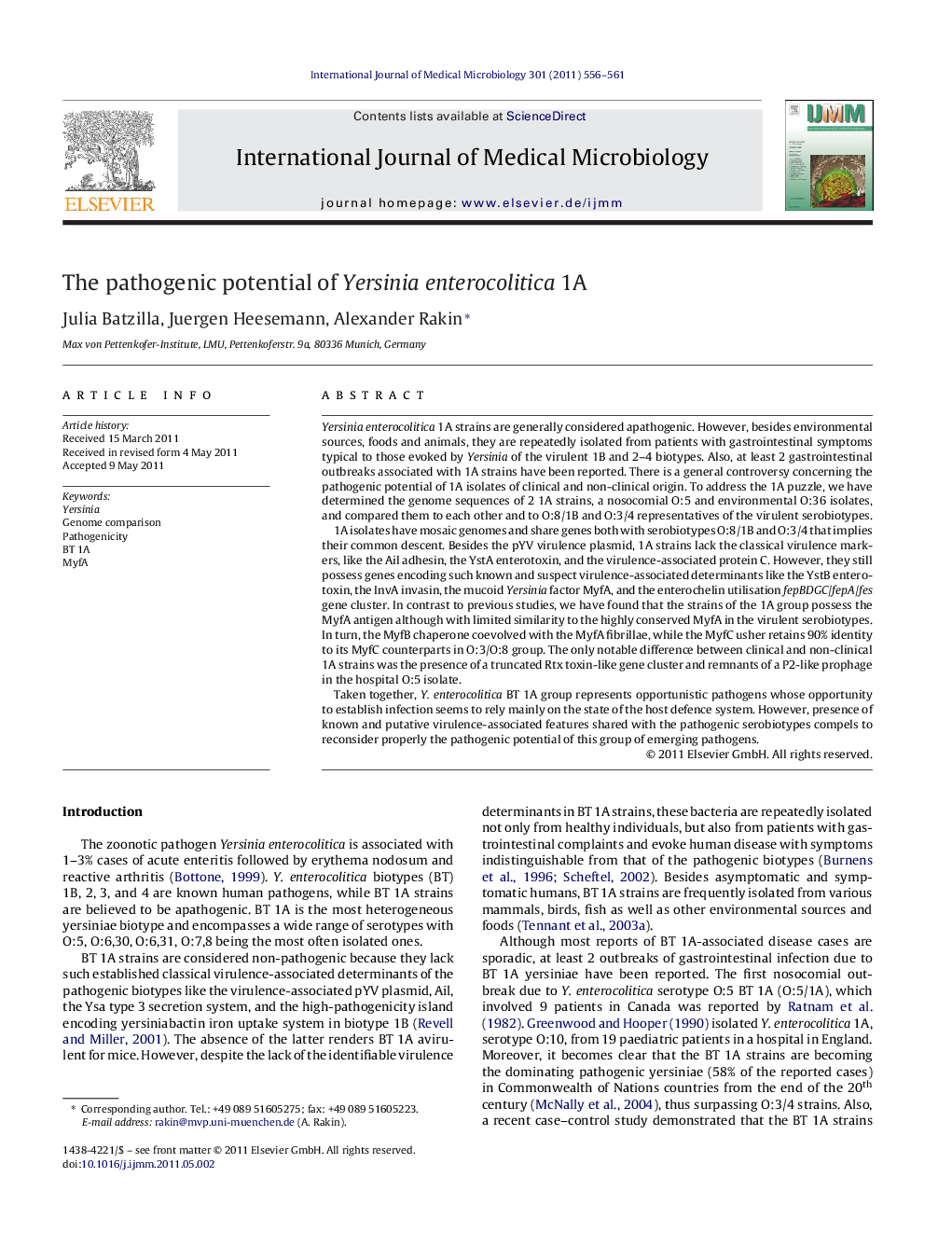| کد مقاله | کد نشریه | سال انتشار | مقاله انگلیسی | نسخه تمام متن |
|---|---|---|---|---|
| 2054853 | 1543714 | 2011 | 6 صفحه PDF | دانلود رایگان |

Yersinia enterocolitica 1A strains are generally considered apathogenic. However, besides environmental sources, foods and animals, they are repeatedly isolated from patients with gastrointestinal symptoms typical to those evoked by Yersinia of the virulent 1B and 2–4 biotypes. Also, at least 2 gastrointestinal outbreaks associated with 1A strains have been reported. There is a general controversy concerning the pathogenic potential of 1A isolates of clinical and non-clinical origin. To address the 1A puzzle, we have determined the genome sequences of 2 1A strains, a nosocomial O:5 and environmental O:36 isolates, and compared them to each other and to O:8/1B and O:3/4 representatives of the virulent serobiotypes.1A isolates have mosaic genomes and share genes both with serobiotypes O:8/1B and O:3/4 that implies their common descent. Besides the pYV virulence plasmid, 1A strains lack the classical virulence markers, like the Ail adhesin, the YstA enterotoxin, and the virulence-associated protein C. However, they still possess genes encoding such known and suspect virulence-associated determinants like the YstB enterotoxin, the InvA invasin, the mucoid Yersinia factor MyfA, and the enterochelin utilisation fepBDGC/fepA/fes gene cluster. In contrast to previous studies, we have found that the strains of the 1A group possess the MyfA antigen although with limited similarity to the highly conserved MyfA in the virulent serobiotypes. In turn, the MyfB chaperone coevolved with the MyfA fibrillae, while the MyfC usher retains 90% identity to its MyfC counterparts in O:3/O:8 group. The only notable difference between clinical and non-clinical 1A strains was the presence of a truncated Rtx toxin-like gene cluster and remnants of a P2-like prophage in the hospital O:5 isolate.Taken together, Y. enterocolitica BT 1A group represents opportunistic pathogens whose opportunity to establish infection seems to rely mainly on the state of the host defence system. However, presence of known and putative virulence-associated features shared with the pathogenic serobiotypes compels to reconsider properly the pathogenic potential of this group of emerging pathogens.
Journal: International Journal of Medical Microbiology - Volume 301, Issue 7, November 2011, Pages 556–561